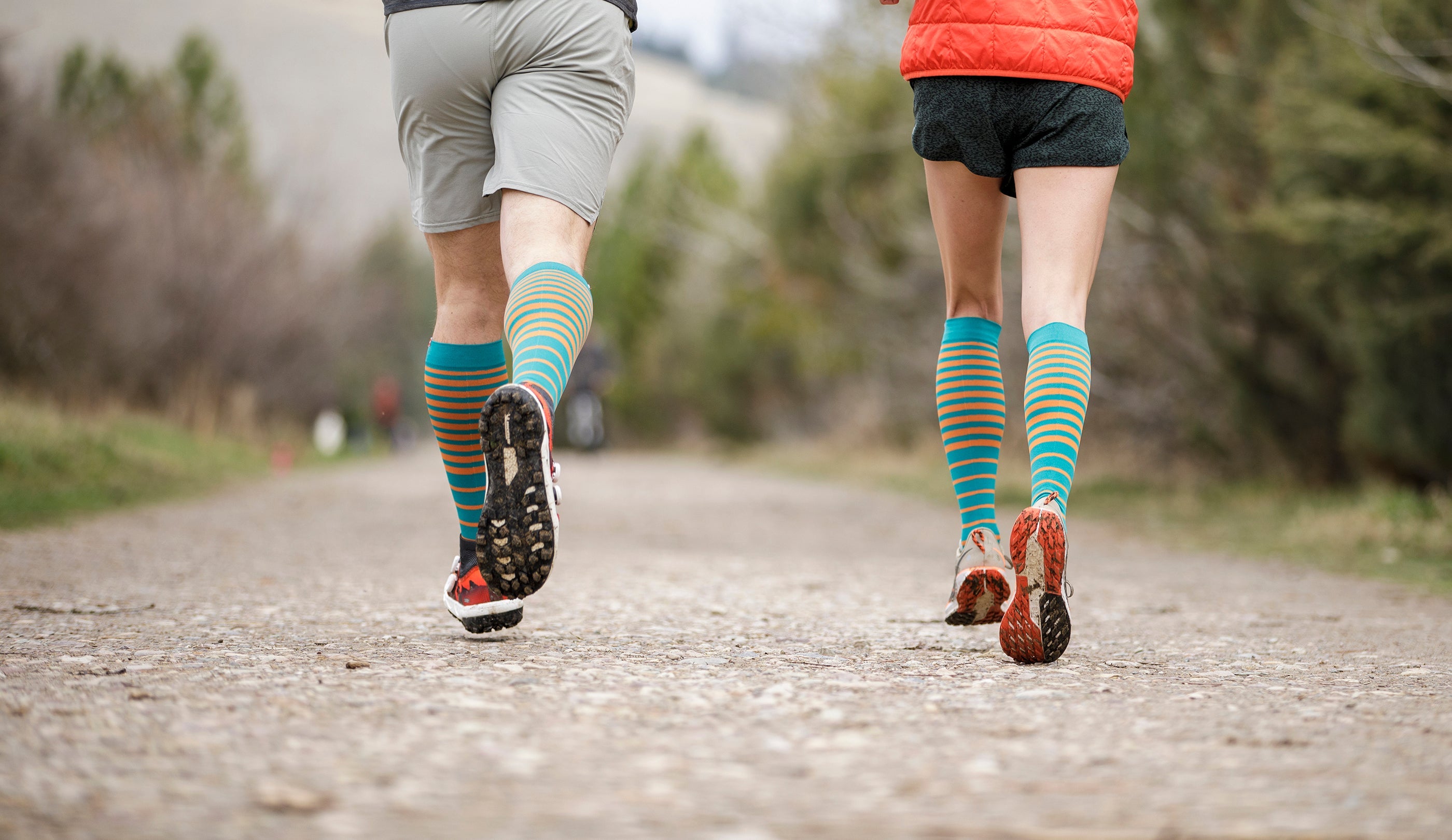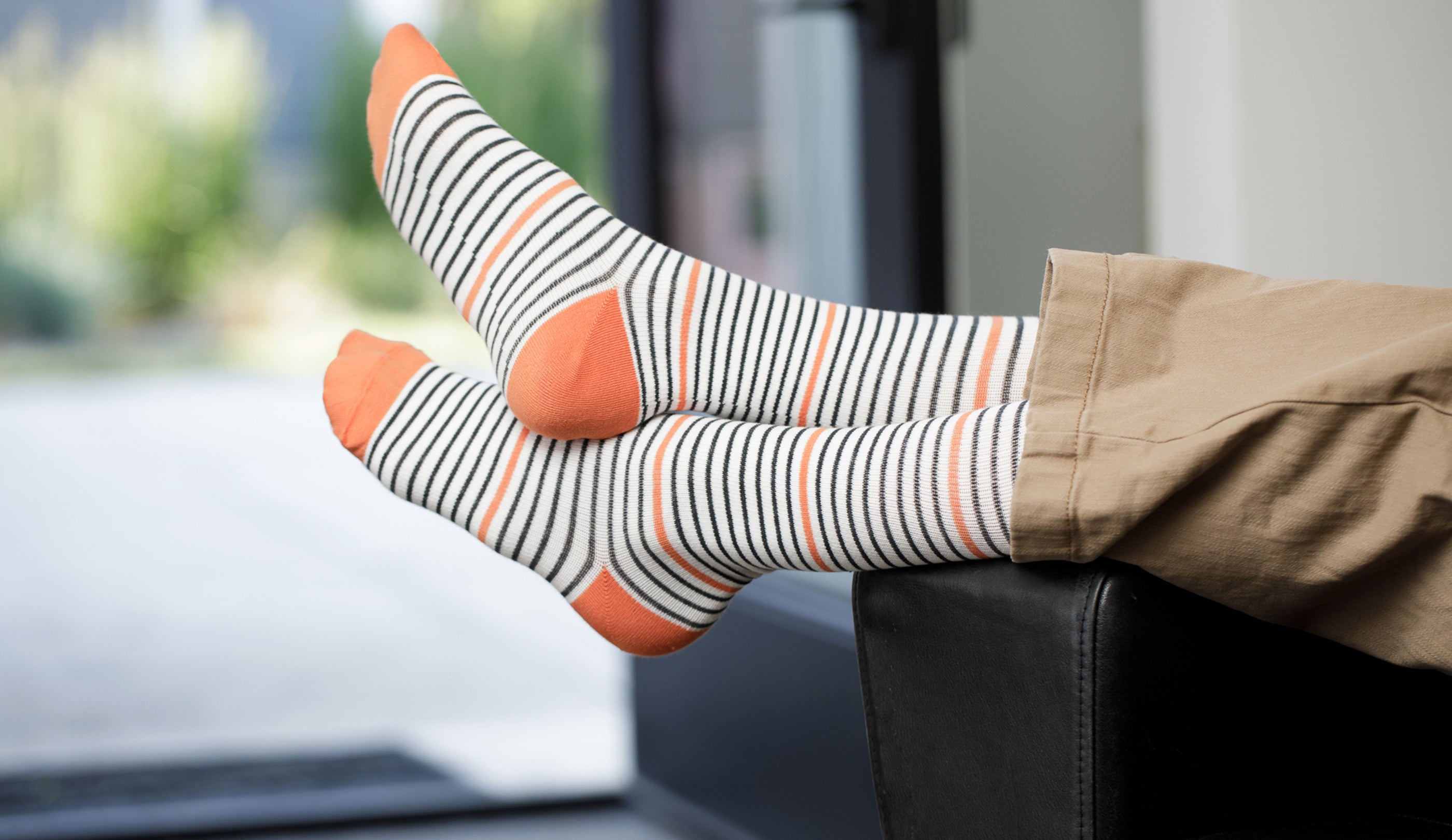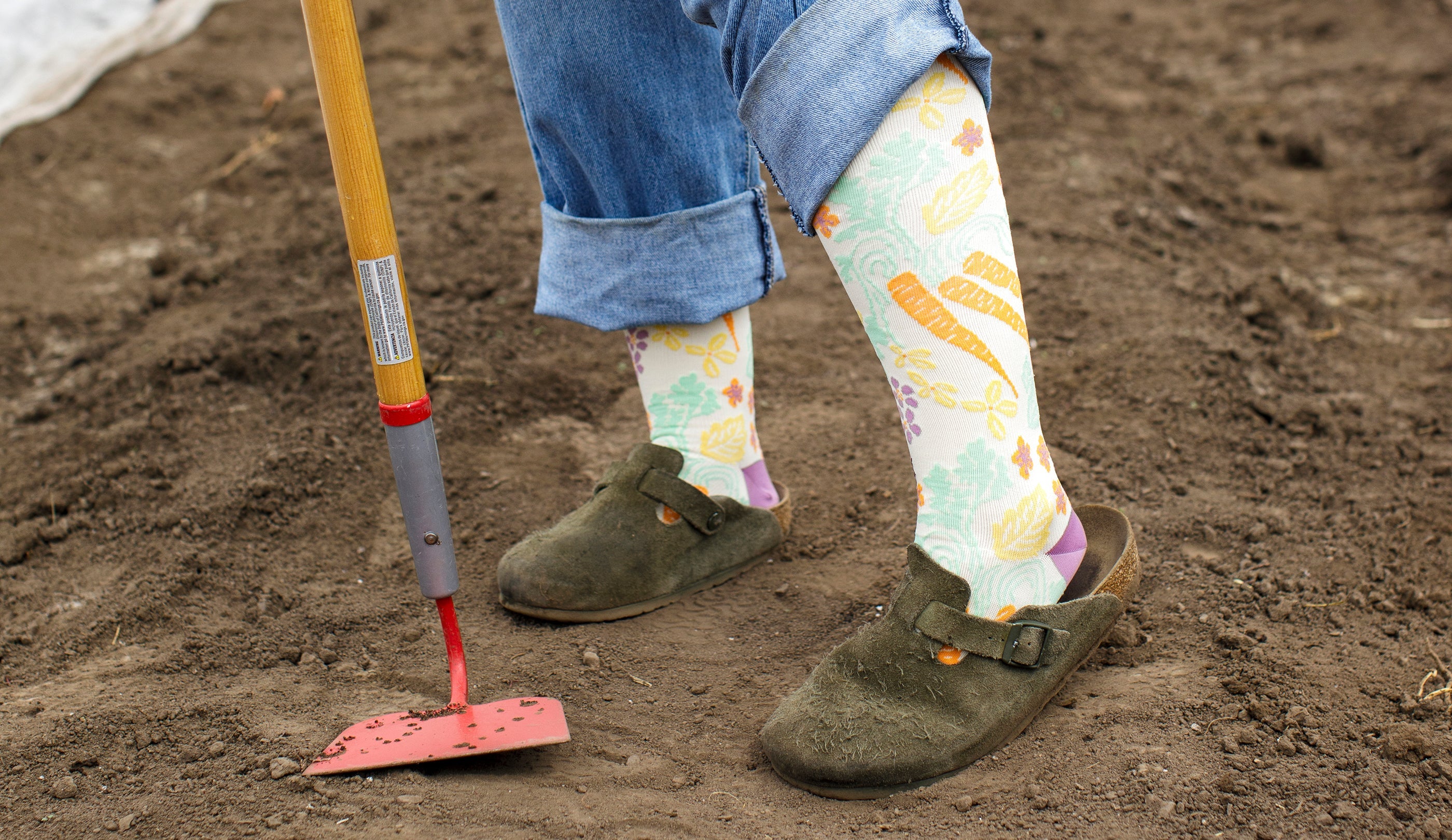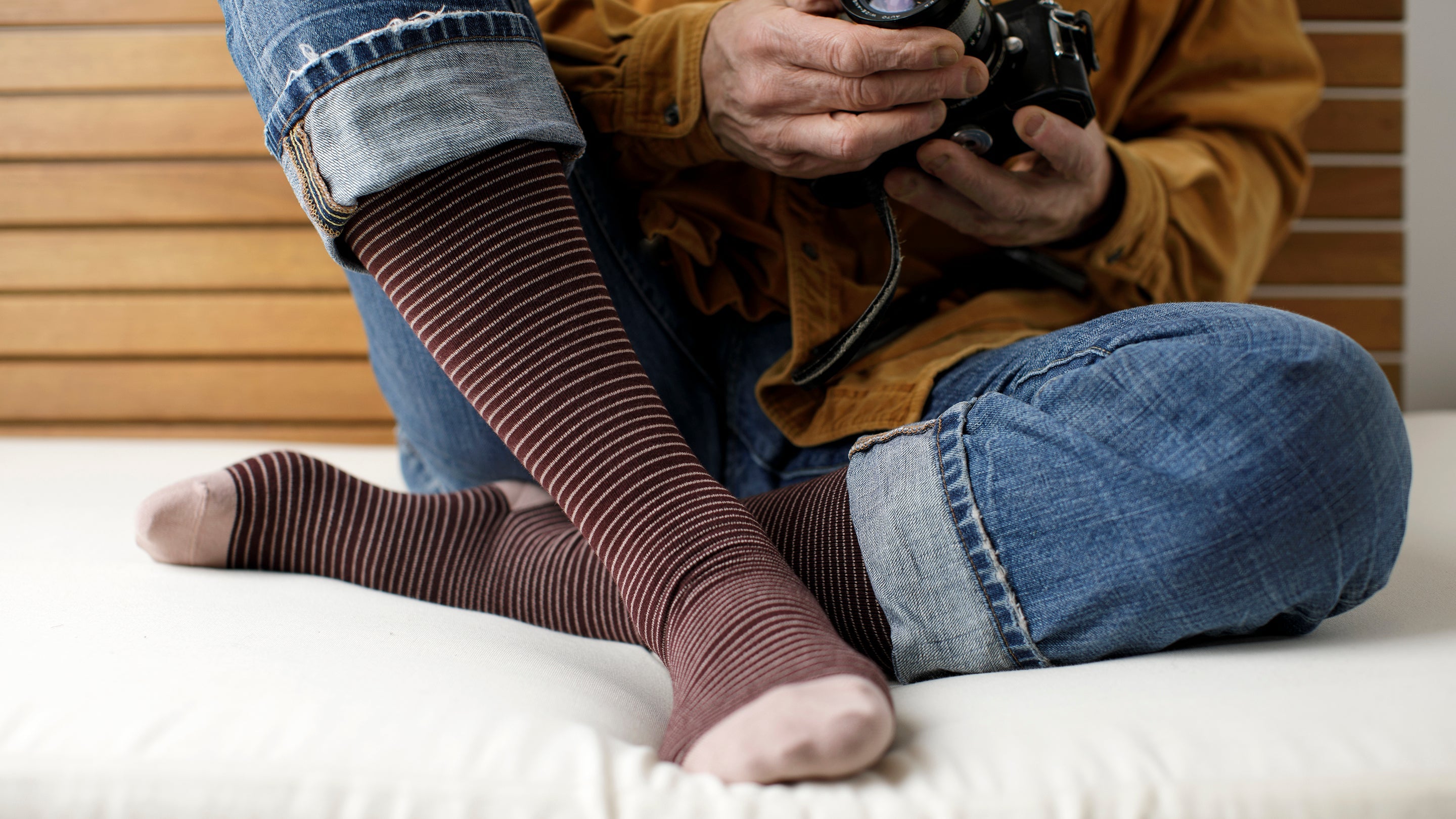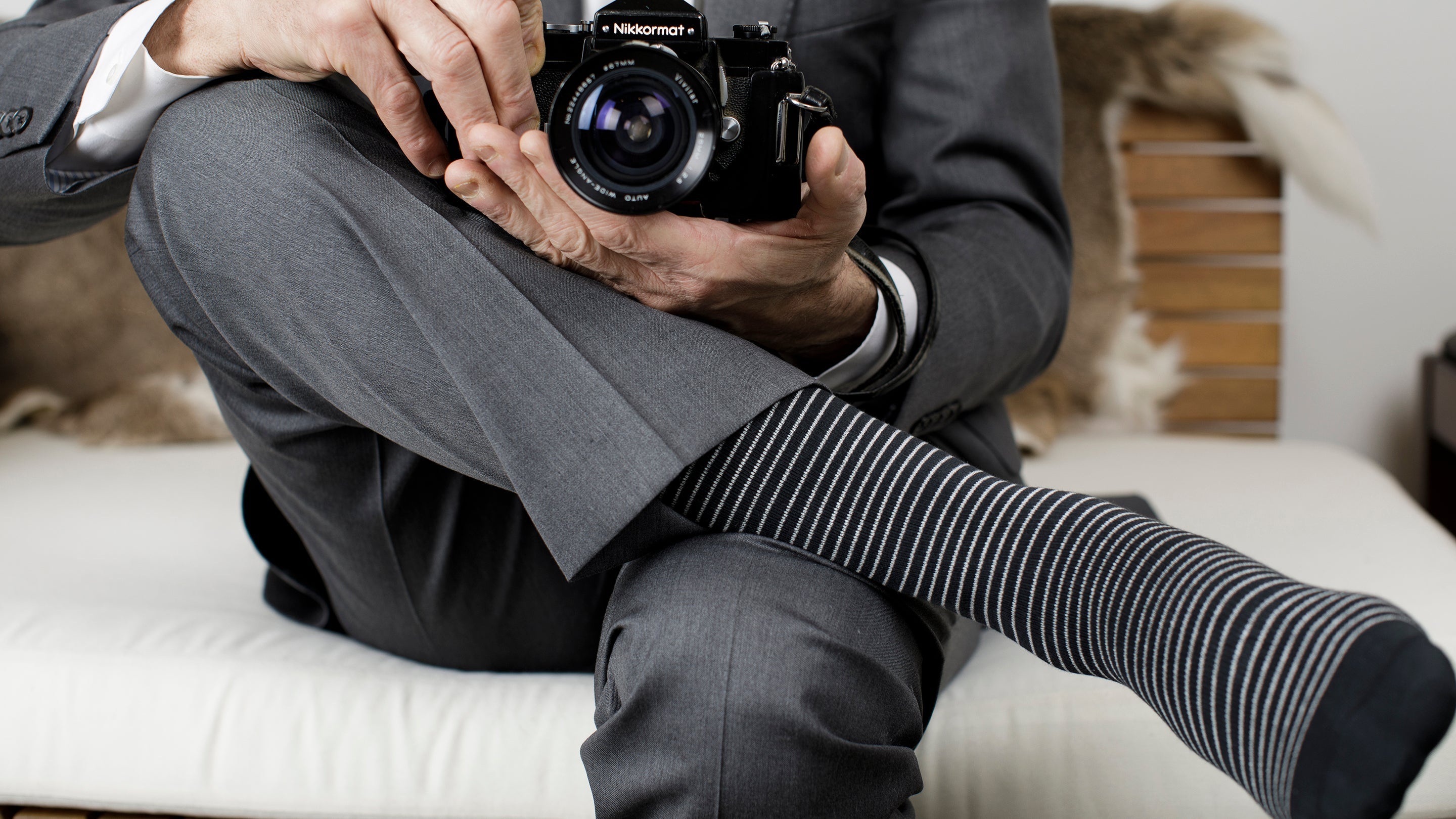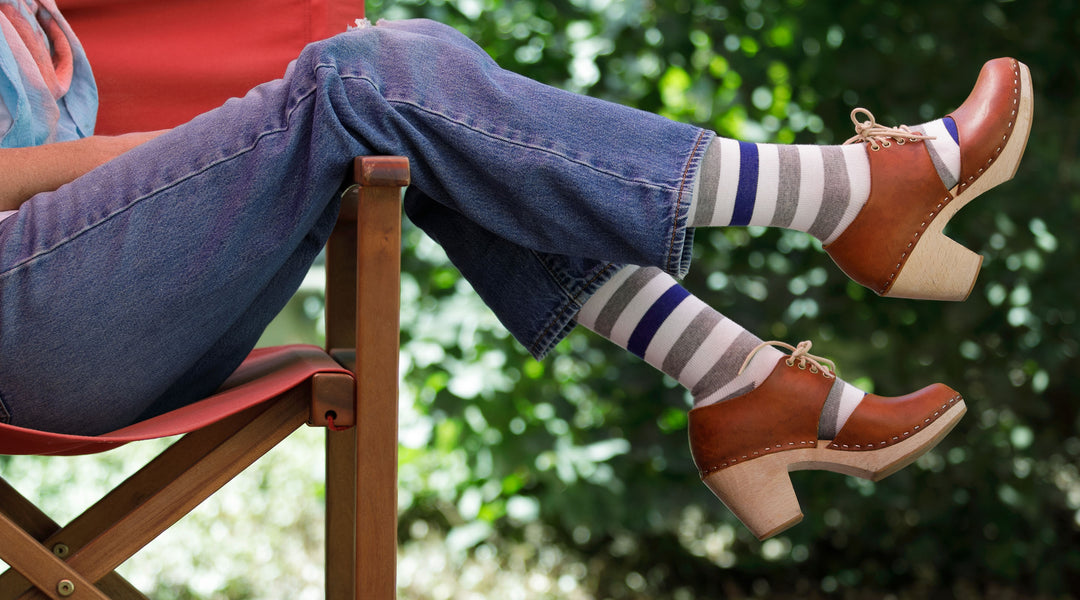

Knowing how to find comfortable work shoes is essential to maintain good foot and ankle health, prevent soreness and discomfort, and even boost your energy levels during the day. Especially if you spend your time standing or walking on a concrete floor or similar tough surface, you may need to set aside fashion considerations and focus on what makes most sense. And this doesn’t apply just to retail workers, nurses, or teachers, among others. In fact, a 2018 survey by the American Podiatric Medical Association found that nearly 75% of the people surveyed had a problem with their feet, and over half said that their foot problems limited their ability to be active.
If you are looking for advice to pick the best shoes for standing and walking at work, it is important to look at the design, support, and comfort levels of your footwear ahead of anything else. You should also consider breathability, flexibility, and accessories such as compression socks.
Read on to get our top 10 tips for finding the right shoes to wear at work.
How to Find the Best Work Shoes for Standing and Walking Comfortably
Research your next pair of work shoes as you would if you were looking for a pair of comfortable running or hiking shoes. Too often, we tend to pick fashion over function when it comes to everyday shoes, especially in more formal environments. Choosing the right shoe could increase your comfort by nearly 43%, according to this research study. That will reduce your risk of foot injury and help you feel your best throughout the work day. So, on those days when you are not working from home, you need comfort, support, and a good-looking pair of shoes. Here is how to make an informed choice.
1. Prioritize Arch Support
Working in retail or construction, for example, involves extended periods of time spent on your feet. Research shows that the lower back and feet can suffer from long work hours on your feet. You can often end up with injuries and even musculoskeletal disorders. In the case of plantar pain, most people complain of discomfort under the heel, ball of foot, or the arch region.
To counteract this, look for shoes with appropriate support for your foot shape. First, check if you have a high arch or not by looking at the footprints you leave behind if you walk barefoot after a shower (with wet feet). You will quickly notice whether the arch is lifted off the ground as there will not be a mark on the inside of your feet. People with a high arch will need to look for shoes that support it - even more so than those with flat feet.
We would also recommend checking how you walk (also called gait) and your foot posture. Some people are overpronators, which means their feet touch the ground in an inward fashion, causing their ankles to bend inwards as well. Over time, shoes that are not supportive enough can cause them pain and they can also end up suffering from rubbing or blisters on the inside of the foot.
So, what can you do to find the right fit? Try on your shoes in the store to see how much arch support they provide if this turns out to be a factor for you. You can also help improve ankle stability and your lower limb blood flow by pairing supportive shoes with compression socks.
2. Look for Cushioning and Shock Absorption
Many jobs involve walking or standing on hard floors. Even if you take regular breaks and put your feet up to soothe them, you’ll need some extra cushioning from your shoes to help you get through a long shift. Cushioning also reduces the impact of hard surfaces on your joints and lower legs, which can affect your whole body. A 2020 study found that shoes with cushion reduce the risk of injury.
So, look for shoes that have been designed for walking or running. Many running brands make extra cushioned shoes specifically for road running and for long distances, which means they will be comfortable, soft, and have room to allow your feet to expand. This is especially helpful when you are warm or have been wearing them for long periods of time. Alternatively, look for shoes specifically designed for nurses - these usually have a cushioned midsole and good lateral and arch support. If you have a job in construction, your boots will be more rigid, but should also have built-in cushioning for shock absorption.

3. Find the Right Fit
This may surprise you, but many people do not wear the right size of shoes. In fact, up to 72% of people don’t wear shoes that are the right fit! It’s a good idea to measure your feet every time you buy new work shoes, or to have your feet measured by a shop assistant. This is because our feet change over time, influenced by our activity levels, lifestyle, and weight, to name a few factors. Otherwise, you risk foot pain, sore toes, rubbing and blisters, and even worse conditions that develop into a full-blown injury over time.
Here is a general guideline for you. This classic study found that at a distance of 1 centimeter (~1/3 to 1/2 inch) from your toe to the end of the shoe.
4. Choose Breathable Materials
Our feet swell during the day, particularly when you wear your work shoes for a long shift, regardless of the temperature. Wearing breathable materials helps reduce this to an extent. It also helps improve your comfort levels, since you will not be struggling with sweaty feet while you are busy working!
It is also important to pair your shoes with breathable socks. Materials such as merino wool are well-known for their ability to wick away moisture and keep feet cool and dry (or maintain warmth in colder temperatures).

5. Choose Slip-Resistant Soles
Slipping on hard surfaces can be a recipe for disaster. Avoid injury by wearing shoes with slip-resistant soles. This is important to note because many road running shoes can have slippery outsoles, since they are not designed to be worn indoors on surfaces like tiles or linoleum. Check your soles in your bathroom to see how they behave - then, if they are too slippery, you can always return them as you will not have worn the shoes outside!
6. Consider Heel Height and Sole Flexibility
Although high-heeled shoes are a personal choice, we would recommend lower heels for professionals who must stand or walk around all day. These shoes place less strain on the balls of your feet, while also not squeezing your toes together in a pointy shape.
However, heel-to-toe drop – the difference in height between the heel and the toe of a work shoe – can be important. Many people find that “zero drop” shoes (popular with certain runners) strain their calf muscles and Achilles tendon, causing pain. For others, a higher drop feels uncomfortable and too much as if it is “sending them forward.” You will need to test out a few shoes to see what works for you. For walking a lot, a “heel-to-toe transition” is preferable, where the shoe rocks forward thanks to its design. For more stationary jobs where you are standing behind a counter but not walking as much, you may not prioritize this forward rocker as much.
Finally, sole flexibility is an interesting point to consider. If the sole is too easy to bend, this may mean you are not getting enough arch support or not enough stability. You need a slightly stiffer shoe for standing for hours on end.
7. Make Sure There’s Plenty of Toe Room
We have mentioned that your feet swell when you are standing all day, because of blood being pushed down by gravity and sometimes also because of the heat. This also affects the toes, which can quickly become uncomfortable in tight work shoes. Consequently, avoid pointy toed shoes and unnecessarily narrow shoes. If you can, you want to be able to splay your toes inside the shoe (which maintains your natural anatomical foot shape). For comfort when walking, this study found that snug-fitting round ballet flat pumps are a good choice. They were ranked the most comfortable by a group of women that need formal footwear but also walk a lot at work.
8. Rotate Shoes to Reduce Wear and Tear
It is a good idea to have more than one pair of work shoes and rotate these to keep them in the best condition. Even the most comfortable shoes will deteriorate with time, becoming less supportive, losing cushioning levels, or wearing off the outsole and making them more likely to slip. If you alternate the shoes you wear on a regular basis, each pair will perform at its best for longer.
9. Wear Compression Socks for Extra Support
To help your feel and legs stay comfortable all day, graduated compression socks are one of the best ways to support your arches and ankles. They also stimulate blood flow out of the legs and back to the heart, fighting the effect of gravity which can lead to swelling, blood pooling, and even dangerous conditions like blood clots.
Professions where you spend all day standing put you at risk of circulatory problems. Compression socks are known to relieve the pressure on the leg veins, all while improving your comfort levels. High-quality merino wool socks boost blood flow while regulating temperature and ensure your feet stay warm and dry, for example. And you will get extra style points with our wide range of designs and colors, which ensure your outfit is functional and looks great, too.
10. Break Your Shoes In the Right Way
Generally, if a new pair of shoes feels comfortable in the store, it will continue to be comfortable when you wear it at work. The opposite is seldom true, because although the idea of “breaking in” shoes suggests that the leather will loosen with time, for example, not all shoes are made from the same materials and have the same flexibility.
However, it pays to get used to your work shoes or boots before wearing them for long days on the job. We recommend wearing them at home for 30 to 40 minutes at first, with the same socks you intend to wear at work. If you put them on at the end of the day, when your feet are the most swollen, you will get an accurate feel for how comfortable they will be a few hours into your work day. You may then want to wear them again the next day for a bit longer, and then, once you are happy, bring them to work for a full shift.
It is worth noting that steel-toed boots are different. Some people prefer to have them stretched by a cobbler to increase comfort and make a slightly too-tight pair fit better. Others may beat them with a hammer to loosen up the leather before wearing them on construction sites. In most cases, we would recommend consulting with the manufacturer or the store you bought them from, to avoid any accidental damage.

If you spend hours on your feet at work, having a comfortable pair of shoes is essential. Otherwise, you will suffer from swelling, discomfort, and even potentially circulatory issues which can get worse with time. With these tips, you should be able to find shoes that fit right and avoid any injuries and problems, so you can enjoy your day without worrying about your feet and your circulation!
References
Anderson, J., Williams, A.E., & Nester, C. (2021). Musculoskeletal disorders, foot health and footwear choice in occupations involving prolonged standing. International Journal of Industrial Ergonomics. Read it here.
Branthwaite, H., Chockalingam, N., Greenhalgh, A., & Chatzistergos, P. (2014). The impact of different footwear characteristics, of a ballet flat pump, on centre of pressure progression and perceived comfort. Foot (Edinburgh, Scotland), 24(3), 116–122. Read it here.
Buldt, A. K., & Menz, H. B. (2018). Incorrectly fitted footwear, foot pain and foot disorders: a systematic search and narrative review of the literature. Journal of foot and ankle research, 11, 43. Read it here.
Charles, T., Mackintosh, D., Healy, B., Perrin, K., Weatherall, M., & Beasley, R. (2011). Merino wool graduated compression stocking increases lower limb venous blood flow: a randomized controlled trial. Advances in therapy, 28(3), 227–237. Read it here.
Harvard Medical School. 2019. Don’t forget your feet. Harvard Health Publishing. Read it here.
Hurst, B., Branthwaite, H., Greenhalgh, A., & Chockalingam, N. (2017). Medical-grade footwear: the impact of fit and comfort. Journal of foot and ankle research, 10, 2. Read it here.
Malisoux, L., Delattre, N., Urhausen, A., & Theisen, D. (2020). Shoe Cushioning Influences the Running Injury Risk According to Body Mass: A Randomized Controlled Trial Involving 848 Recreational Runners. The American journal of sports medicine, 48(2), 473–480. Read it here.
Nancarrow, S. (1999). The footwear suitability scale: a measure of shoe-fit for people with diabetes. Australasian Journal of Podiatric Medicine. Read it here.
